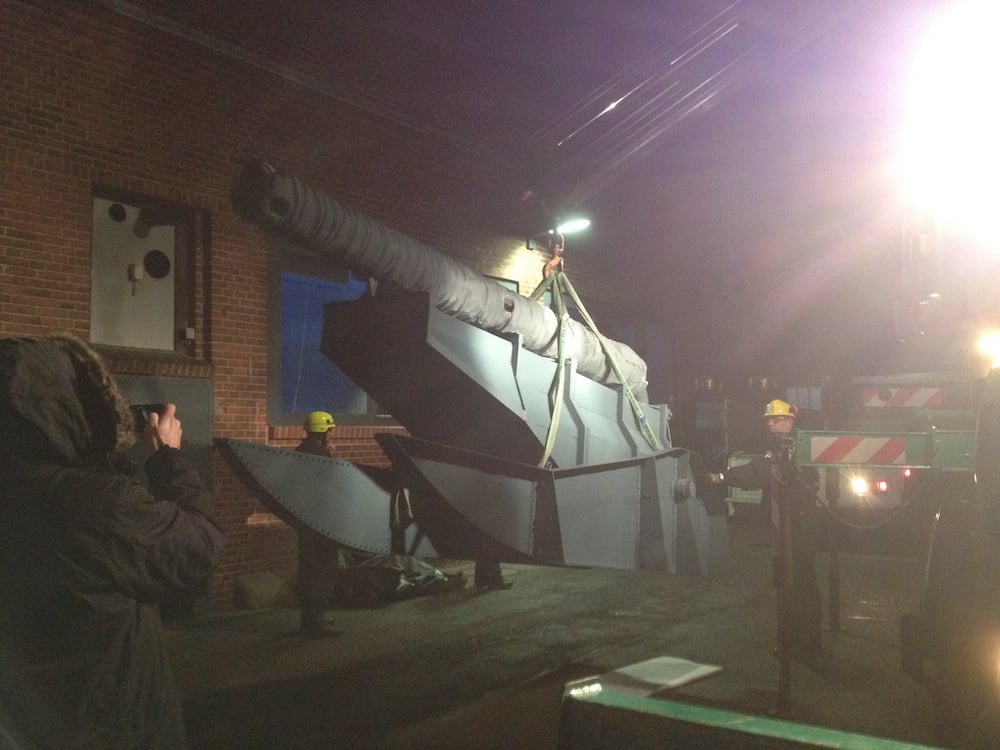Art World
German Police Confiscate Artist’s Coconut Cannon
Artist Julian Charrière was set to feature the work in the first-ever Antarctic Biennial.

Artist Julian Charrière was set to feature the work in the first-ever Antarctic Biennial.

Perwana Nazif

In the early hours of the morning on March 2, Berlin police raided French-Swiss artist Julian Charrière’s studio and confiscated a one-ton air cannon.
The air cannon is a work of art created by Charrière for the first Antarctic Biennale (March 17—28) entitled The Purchase of the South Pole. The work was created specifically for the biennial over the course of two months and is meant to fire a coconut the artist took from Bikini Atoll in the Marshall Islands—the site of American atomic testing in the 1940s and 50s.
The cannon, with a coconut tree as its barrel, was inspired by Jules Verne’s 1889 novel The Purchase of the North Pole, in which a company builds a cannon to displace land for commercial exploitation.

Image of authorities raiding the artist’s studio and seizing the artwork. Image courtesy of the artist.
“The location of the performance in Antarctica was due to highlight the importance of international demilitarization agreements, such as the 1959 Antarctic Treaty that suspends sovereign claims, reserving the continent for peaceful scientific inquiry. But the idea is not limited to this specific geographic locale. Peace and ecological thinking are deeply entwined. The international community needs to recognize this,” the artist said in a statement sent to artnet News.
Ironically, the work’s emphasis on peaceful scientific progress did not help during the raid, with police using a crane to take the work out of the studio.
While the artist was in New York for the Armory Show in early March, a passerby alerted the police when suspicions were raised after seeing a studio assistant assembling the work in order to test it prior to shipment, which was due the very day it was confiscated.
Now, rather than being prepared for display at the Biennale, the work sits in a German storage facility for illegal weapons, despite the assistant’s proof of documentation around the work’s relation to the Antarctic Biennale to authorities.
Now, Charrière’s contribution at the Antarctic Biennale will instead be the documentation of the confiscation in addition to a new work, also related to the project.
The artist, however, plans to fire the cannon on another occasion up North, provided he is able to retrieve the work of art. Here’s hoping that his contribution to his year’s Venice Biennale won’t face similar difficulties.